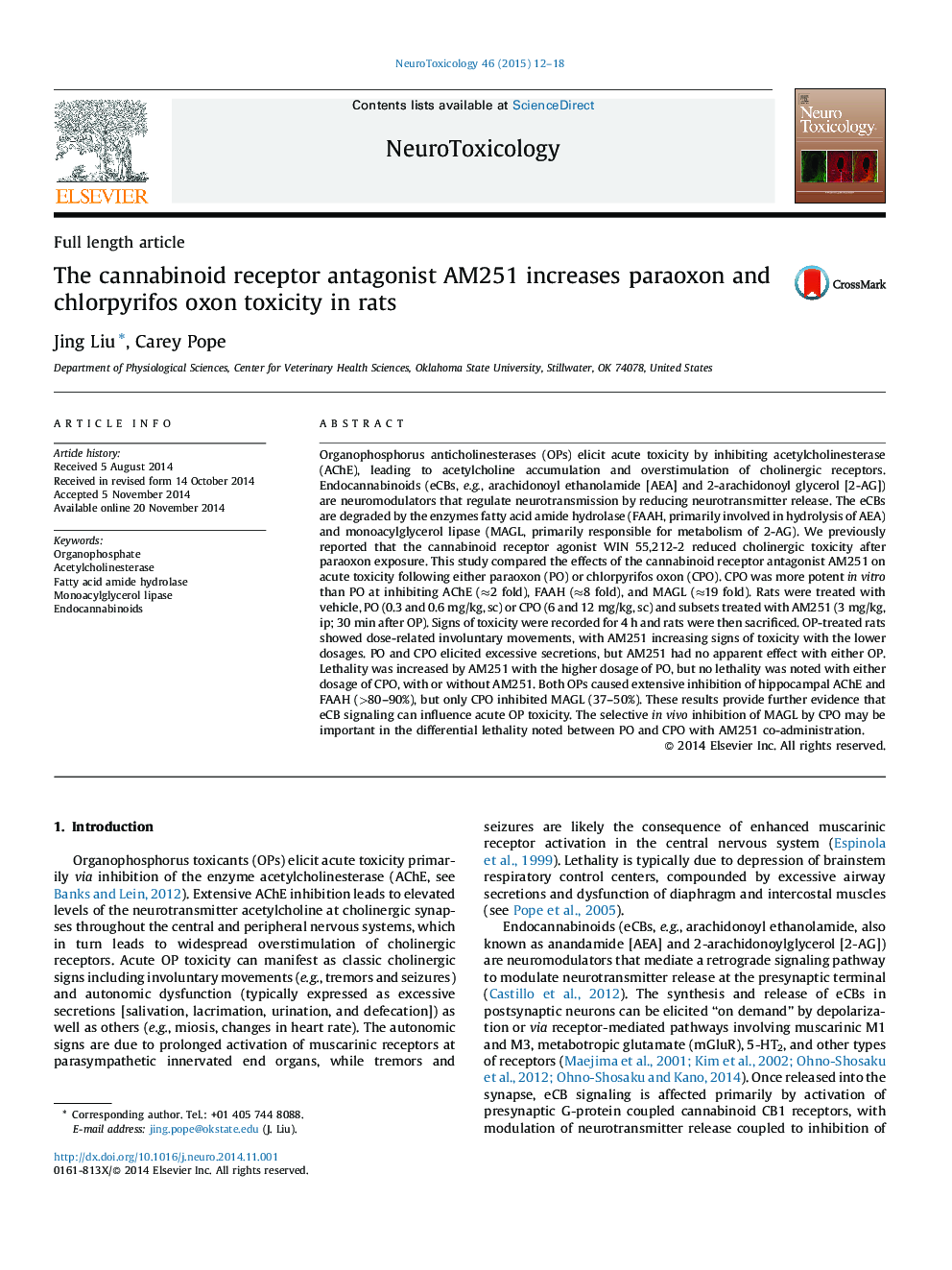| Article ID | Journal | Published Year | Pages | File Type |
|---|---|---|---|---|
| 2589597 | NeuroToxicology | 2015 | 7 Pages |
•Paraoxon and chlorpyrifos oxon inhibited monoacylglycerol lipase (MAGL) and fatty acid amide hydrolase (FAAH)in vitro.•In vivo, marked hippocampal FAAH inhibition was noted with both, but only chlorpyrifos oxon inhibited MAGL.•AM251 increased cholinergic toxicity of paraoxon and chlorpyrifos oxon, but only increased acute lethality in paraoxon-treated rats.•Differences in MAGL inhibition may lead to selective toxicity with these two organophosphorus toxicants.
Organophosphorus anticholinesterases (OPs) elicit acute toxicity by inhibiting acetylcholinesterase (AChE), leading to acetylcholine accumulation and overstimulation of cholinergic receptors. Endocannabinoids (eCBs, e.g., arachidonoyl ethanolamide [AEA] and 2-arachidonoyl glycerol [2-AG]) are neuromodulators that regulate neurotransmission by reducing neurotransmitter release. The eCBs are degraded by the enzymes fatty acid amide hydrolase (FAAH, primarily involved in hydrolysis of AEA) and monoacylglycerol lipase (MAGL, primarily responsible for metabolism of 2-AG). We previously reported that the cannabinoid receptor agonist WIN 55,212-2 reduced cholinergic toxicity after paraoxon exposure. This study compared the effects of the cannabinoid receptor antagonist AM251 on acute toxicity following either paraoxon (PO) or chlorpyrifos oxon (CPO). CPO was more potent in vitro than PO at inhibiting AChE (≈2 fold), FAAH (≈8 fold), and MAGL (≈19 fold). Rats were treated with vehicle, PO (0.3 and 0.6 mg/kg, sc) or CPO (6 and 12 mg/kg, sc) and subsets treated with AM251 (3 mg/kg, ip; 30 min after OP). Signs of toxicity were recorded for 4 h and rats were then sacrificed. OP-treated rats showed dose-related involuntary movements, with AM251 increasing signs of toxicity with the lower dosages. PO and CPO elicited excessive secretions, but AM251 had no apparent effect with either OP. Lethality was increased by AM251 with the higher dosage of PO, but no lethality was noted with either dosage of CPO, with or without AM251. Both OPs caused extensive inhibition of hippocampal AChE and FAAH (>80–90%), but only CPO inhibited MAGL (37–50%). These results provide further evidence that eCB signaling can influence acute OP toxicity. The selective in vivo inhibition of MAGL by CPO may be important in the differential lethality noted between PO and CPO with AM251 co-administration.
